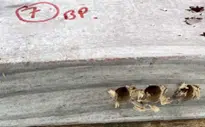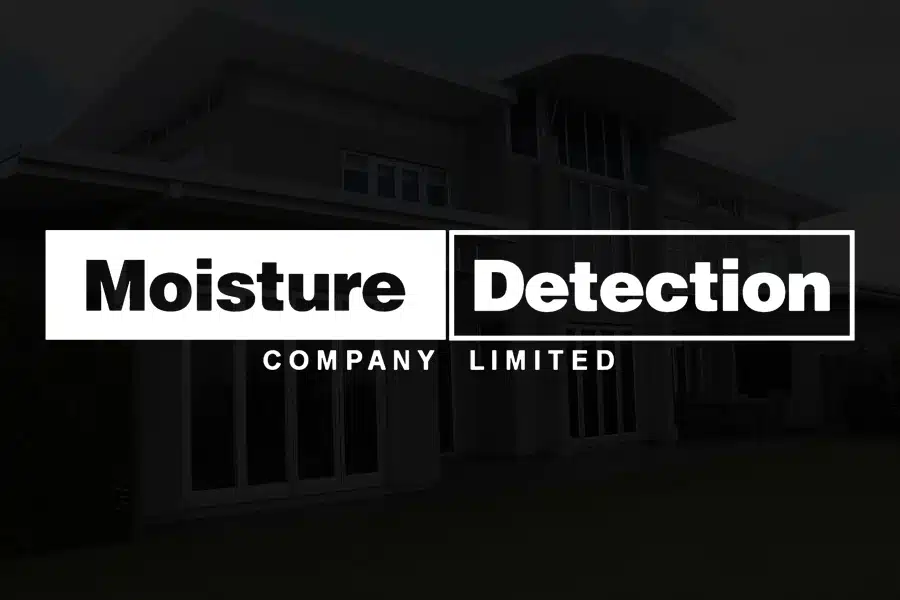New Evidence Reveals the Hidden Damage to Flood Affected Homes
(that insurance companies aren’t fixing)
Have the recent floods left your house vulnerable to future decay problems?
Has your insurance company really done enough to fix all of the flood damage?
Recent tests suggest that the remedial works being carried out by insurance companies is not enough, leaving your timber with dangerously reduced levels of treatment. This is a ticking time bomb for homeowners.
To improve our understanding of the extent of this problem, and to alert affected homeowners, Moisture Detection Company are offering free timber treatment testing for flood affected houses.
Details are later in this article.
The Evidence – Flooding has a Permanent Negative Effect on Timber
The following images show the effect of flooding on the treatment that protects your house from decay and borer.
We were asked to carry out timber treatment testing on a house in West Auckland, which had been flooded by the stream behind the property. We expected the flooding to have had some effect on the treatment levels, but we were quite surprised to see just how serious this was.
We test for boron for using standard laboratory techniques, comparing known samples of treated and untreated timber against samples retrieved from the house framing. The relative colour change of the samples indicates the presence, and strength of the boron treatment.
Image 1: Standard H1.2 Framing Timber – Positive Boron Test
Image 1 is a boron test on a sample of standard H1.2 framing. That’s the pink stained wood you see used for probably 99% of houses being built in New Zealand. The samples and paper change colour to red indicating boron.
Image 2: Standard Untreated Timber – Negative Boron Test
Image 2 is a boron test on a sample of untreated timber, showing little or no red colouration.
Repeating these tests on samples of timber taken from the flood affected house, we found:
Above the Flood Level
Image 3: Sample of Framing Timber, above the Flood Level – Positive Boron Test
Image 3 is from a recently flooded house, with the sample taken above the flood level. The boron level is about the same as the H1.2, so it’s treated. Great.
Next, we tested samples taken from below the flood. If your house was flooded recently then the next pictures should worry the heck out of you.
Below the Flood Level
Image 4: Sample of Framing Timber, below the flood Level – Negative Boron Test
The boron is gone.
What Happened to the Boron Treatment?
Boron is an excellent timber treatment, protecting your house against all manner of insects and many types of decay fungi. However, only if there is enough boron. Not enough and the protection is gone or reduced. H1.2 is treated to a reasonable level, not nearly as much as in the old days, but enough boron to control most decay and insects.
The downside of boron is that it’s water soluble. When boron treated timber is left sitting in water, or against wet absorbent materials (like wet gib or particle board) the boron can just dissolve or leach out of it.
And that’s what seems to have happened here. The boron has just gone, leaving the framing virtually unprotected. It’s treated above the flood level, untreated below. That’s what the tests show.
Here are more examples of tests on samples from the same house below the flood level. Conclusive evidence.



The Problem for Homeowners
Flood waters contain all manner of fungal spores which stay on or in the timber and don’t die easily. While exposed for drying, more spores from the air are settling on it. Even when the timber appears dry on the surface, there is still residual moisture.
When you re-line the walls, that moisture struggles to get out. Walls can take years to fully dry once they are enclosed, especially behind face-fixed claddings. While moisture levels remain elevated, decay fungi can continue growing, with no boron left to control them.
Moisture follows gravity, seeping down vertical studs and accumulating in the bottom plate, which is the last to dry. This is also where more of the boron has leached out and where decay usually starts. When we test houses for moisture and decay, this is where we find it.
We know what happens next from the ‘leaky homes’ scandal, where regulatory authorities allowed untreated timber to be enclosed behind plaster cladding, with no ventilation, and in houses that leaked.
Moisture + Fungal Spores + No/Minimal Treatment = Timber Decay
Insurance Companies Aren’t Repairing This
And what do your insurance assessors say? “Remove the gib, spray with disinfectants or mould treatments, let it dry, then cover it up”. This is what is happening to thousands of flood damaged homes.
Your insurance company should be putting your house back to how it was pre-flood, i.e., with timber treated to at least H1.2 levels. But they aren’t. Is this going to be next major house scandal? In the future, will houses affected by the 2023 floods now be written off by buyers and banks as high risk? Just like plaster clad houses today?
Time will tell but for a limited time, we will test your timber for free so you can be educated about your risks, and talk to your insurance company about how they will return your house to its pre-flood condition.
How at Risk is Your House?
The risk of your house being left with decay problems post-flooding, depends a lot on when it was built and how it was built.
If your house is from 1993 to 1997, it’s most likely that your timber was only lightly treated in the first place. Just one flood could deplete the boron dangerously.
If built between 1998 and around 2004, then you are likely to have completely untreated timber, which has zero protection against decay and insects if it becomes wet. Your risk is much higher.
Houses with monolithic type claddings, directly fixed to the framing are at very high risk. Not only are they likely to have been built with untreated or undertreated timber, but the framing can’t dry out properly. If you own one of these houses, which has been flooded, then you have a serious risk on your hands. One which you shouldn’t ignore.
Modern houses, with cavities in the wall and H1.2 timber are less vulnerable but still at risk, especially if subjected to repeat flooding event. Pre-1992 houses are also at less risk as the timber should have had higher boron treatment originally.
Free Timber Treatment Testing
As the owner of a flood affected home, you should know whether your timber is still protected, especially if you have a monolithic plaster clad house from the 1993 – 2004 era.
We normally charge $495 plus GST to collect and test samples however for a limited time, we will do this for free. This is to help you to maintain your most important asset but also to help us with our research into this important issue.
This is totally free to you for a limited time, provided you can collect and send the samples to us. If you need us to take the samples for you, then there will be a small charge to cover our time and travel costs. Let us know, on our Contact Form and we will advise the cost.
Collecting Your Samples for Free Timber Treatment Testing
All we ask is that, before the gib goes back on, you take an electric drill with a 10mm drill bit, and drill some holes into your timber. Collect the wood shavings into separate bags. Write the location on the bag (e.g. lounge wall, above flood). Take at least two samples from studs above the flood level and four from various places below the flood level. These should be from the bottom plate (see photo below). About two tablespoons of wood chips/shavings from each location should be enough.
When you have your samples, contact us via phone on (09) 271 0522, or email on info@moisturedetection.co.nz. We will register your free timber treatment testing application and provide delivery instructions.
Is it Possible to Re-Treat Your House Timber?
The answer is yes, but it’s easier done before the gib goes back on.
Moisture Detection Company developed RotStop, a topical timber treatment that we can apply directly to exposed timbers, restoring the boron levels and killing off fungal spores. In most cases, we only re-treat the external walls and any others which may be exposed to high moisture, e.g. under showers.
RotStop is a proven control for a wider range of fungal species, such as white rot and soft rot. Unlike other boron post-treatments, such as Framesaver or metallic preservatives, such as Metalex.
If the gib is already back on, we apply the Rotstop through the internal linings or external cladding, treating the timber and killing off existing decay.
Other services that we offer, which you may be interested in are:
Mdu Moisture Monitoring System
Weathertightness and Pre-Purchase Inspections
Preparing a Plaster Clad House for Sale
Repairs for Plaster Clad Houses





